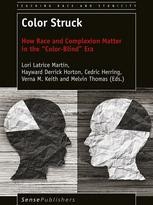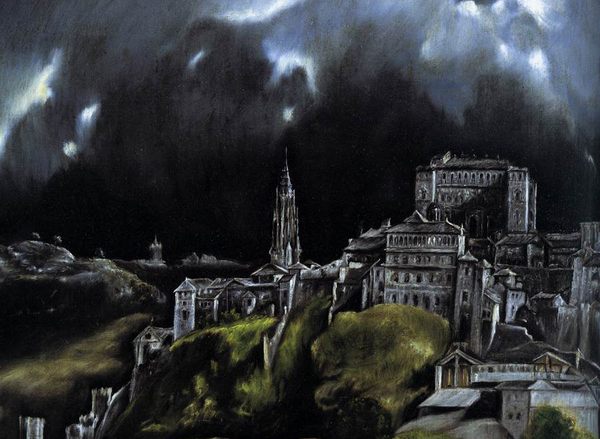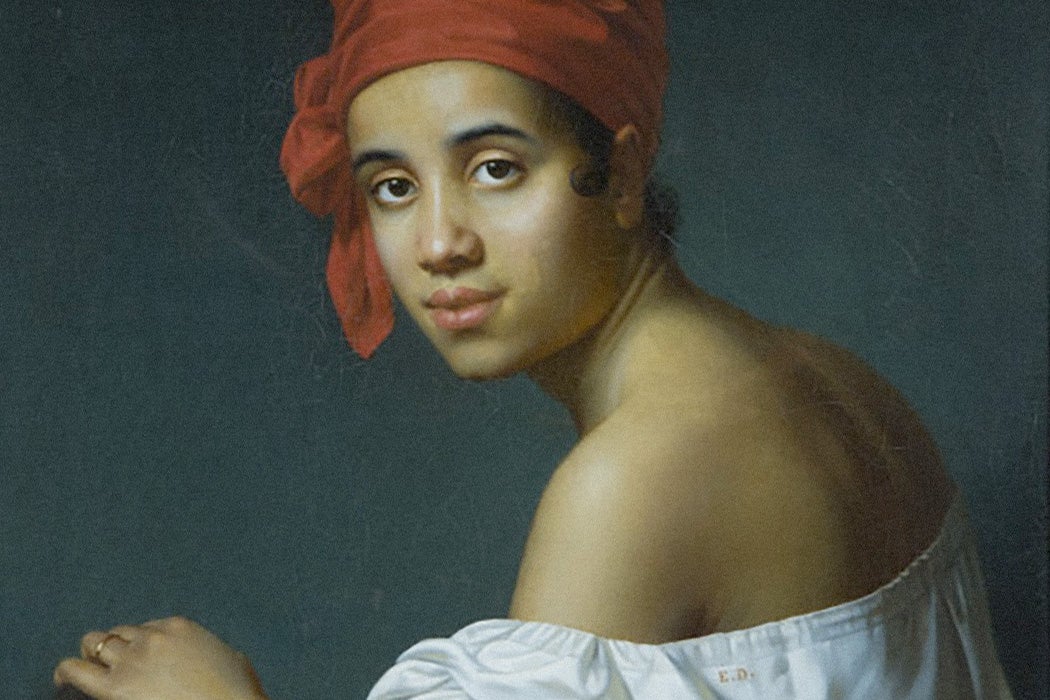You are using an out of date browser. It may not display this or other websites correctly.
You should upgrade or use an alternative browser.
You should upgrade or use an alternative browser.
Fetishzation & Exotization of US Creoles, Louisiana history & People
- Thread starter Supper
- Start date
More options
Who Replied?TheKongoEmpire
The First Men
Deep
IllmaticDelta
Veteran
myth: is that all Aframs with French surnames have ties to Louisiana Creole or Haitians

.
.
.
people forget French enslavers were all up in the North East and various parts of the South outside of Mississippi-Louisiana/Golf Coast.

One of the most well known Afram surnames is French and it's Carolina based.

it goes back to a south carolina rice plantation
South Carolina - African Americans - Charles Manigault's Plantation Gowrie

.
.


.
.
.

.
another South Carolina one that's pretty exclusively Afram now:


It's odd because the only place with "white creoles" is in America. Anywhere else creole's come in light brown to dark skinned and are considered a Black population.creole in the louisiana context did mean anyone with roots going back to the spanish french people
BUT!!!
1)when jim crow came through, WHITE CREOLES didn't wan't to be confused with CREOLES OF COLOR aka gens de couleur libres (these are the ones of african descent, dark and/or light skinned) so over time, they stopped calling themselves "Creole". Today, Creole is synonymous with the ones of African descent. The white creoles just blended into white america and cajuns.
2) light skinned creoles of color were mad color struck even against darker creoles of color and they were the ones who created/perpetuated that myth that Creoles/true Creoles were light skinned
she means franco-african (creole) + anglo-african (non-creole, afram)
because of the 3 tier caste system (black, white and mixed) in Louisiana before the Anglos (2 tier caste system, only black and white) took over had the Creoles of Color actingsimilar to what you get in Latin America
. Jim Crow came through
and the rest is history.
Amour Creole covers lifestyle, culture, news, issues and events for people of Haitian and French Caribbean descent. The magazine is published quarterly, with a targeted circulation of over 250,000, and is available by subscription and at retail outlets in the United States, Canada, Haiti, France, Martinique, Guadeloupe, St.Lucia, Guyana and within regions of Africa.
Amour Creole | Magazine For Lifestyle and Fashion
A unique magazine dedicated to providing our readers with information on fashion trends, business, entertainment, lifestyle. Pass your time with our online casino fashion slots.
Last edited:
Skin Complexion in the Twenty-First Century Mathews, Tayler J; Johnson, Glenn S. Race, Gender & Class; New Orleans Vol. 22, Iss. 1/2, (2015): 248-274.

 pubmed.ncbi.nlm.nih.gov
pubmed.ncbi.nlm.nih.gov

 pubmed.ncbi.nlm.nih.gov
pubmed.ncbi.nlm.nih.gov

 link.springer.com
link.springer.com
 scholarworks.waldenu.edu
scholarworks.waldenu.edu

Skin-Tone Trauma: Historical and Contemporary Influences on the Health and Interpersonal Outcomes of African Americans - PubMed
Empirical evidence demonstrates that racism is a source of traumatic stress for racial/ethnic minorities, particularly African Americans. Like race and racism, skin tone and experiences of colorism-an often overlooked form of discrimination that privileges lighter skinned over darker skinned...

Light Privilege? Skin Tone Stratification in Health among African Americans - PubMed
Skin tone is a significant marker used by others to evaluate and rank the social position of minorities. While skin color represents a particularly salient dimension of race, its consequences for health remains unclear. This study uses four waves of panel data from the Coronary Artery Risk...

Color Struck
Skin color and skin tone has historically played a significant role in determining the life chances of African Americans and other people of color. It has also been important to our understanding of race and the processes of racialization. But what does the relationship between skin tone and...
African American Men's Perceptions of Colorism
Colorism bias related to skin complexion is a persistent phenomenon within the African American community and often shapes the family dynamics and results in noteworthy adverse psychosocial impacts for African Americans. Researchers have examined colorism or the preference for lighter skin over...
IllmaticDelta
Veteran
It's odd because the only place with "white creoles" is in America. Anywhere else creole's come in light brown to dark skinned and are considered a Black population.
Spanish/Iberian colonies also had a "white creoles (born in the colony)" group


I wonder to what degree these people were actually "white". White in Latin America has a different meaning. And the root of creole culture is in the African part. That is the commonalty we see all throughout the diaspora. As we can see in the social pyramid, the actual ruling class brancos (whites) are considered the aristocratic class.Spanish/Iberian colonies also had a "white creoles (born in the colony)" group


Perhaps this explains more of it?
José Vasconcelos - the Cosmic Race / La raza cosmica (Race in the Americas).

How Racism Was First Officially Codified in 15th-Century Spain
In 1449, a Toledo edict made racial discrimination legal.
 www.atlasobscura.com
www.atlasobscura.com

Medieval Slave Trade: How Slavery Thrived In Renaissance Europe | HistoryExtra
“Wicked, an abomination, and against all humanity.” These words, uttered in 1416, shine a light on a dark truth: that slavery thrived in Renaissance Europe. Hannah Skoda tells the stories of people living in bondage in a period when ideals of liberty and the nobility of human nature didn’t apply...
www.historyextra.com
Creole, Spanish Criollo, French Créole, originally, any person of European (mostly French or Spanish) or African descent born in the West Indies or parts of French or Spanish America (and thus naturalized in those regions rather than in the parents’ home country). The term has since been used with various meanings, often conflicting or varying from region to region.
In the West Indies the noun creole formerly was used to denote descendants of any European settlers, but commonly the term is used more broadly to refer to all the people, whatever their class or ancestry—European, African, Asian, Indian—who are part of the Caribbean culture.
In French Guiana the term refers to those who, whatever the colour of their skin, have adopted a European way of life; in neighbouring Suriname it refers to descendants of African slaves. In Louisiana in the United States it refers, in some contexts, to French-speaking white descendants of early French and Spanish settlers and, in other contexts, to a person of mixed black and white ancestry speaking a form of Frenchand Spanish.

Creole | History, Culture & Language | Britannica
Creole, originally, any person of European (mostly French or Spanish) or African descent born in the West Indies or parts of French or Spanish America (and thus naturalized in those regions rather than in the parents’ home country). The term has since been used with various meanings, often
Last edited:
IllmaticDelta
Veteran
I wonder to what degree these people were actually "white". White in Latin America has a different meaning. And the root of creole culture is in the African part. That is the commonalty we see all throughout the diaspora. As we can see in the social pyramid, the actual ruling class brancos (whites) are considered the aristocratic class.
In Louisiana it was used to differentiate native born African slaves vs colony born slaves

but there are sourced claims that it was originally used for the pure white (colony born and then the euro-born immigrants that came later) French/Spanish residents with some German and Irish mixed in, prior to Anglo rule.




In Louisiana it was used to differentiate native born African slaves vs colony born slaves

but there are sourced claims that it was originally used for the pure white (colony born and then the euro-born immigrants that came later) French/Spanish residents with some German and Irish mixed in, prior to Anglo rule.



col
Some remarkable claims have been made in that documentation. What is the source?
It can get complicated. I think we have to go back to the root.
Contexts: Free People of Color in the Americas, 1492-1830
The history of free people of color in the Americas extends back to the beginning of the Age of Exploration. The crew of Christopher Columbus's first expedition included a free black sailor. Juan Garrido, a black conquistador, traveled with Ponce de Léon and Pánfilo de Narváez in what is now the United States and Mexico, while Juan Valiente, a free black man from Cádiz, helped lead the first Spanish expedition to Chile. Estéban de Dorantes, a negro alárabe ("Arabized black"), saved the shipwrecked explorer Álvar Núñez Cabeza de Vaca and his men from certain death by posing as a shaman and persuading Native Americans to share their food.
Free people of color played an important role in Spain's New World empire as soldiers, sailors, artisans, and laborers. Manumission, by which slaves were granted or purchased their freedom, had been customary in the Iberian Peninsula as far back as Roman times and was transplanted by the Spanish and Portuguese to their American colonies, giving rise to a large and vibrant population of free people of color.
In some ways, the French had a similar outlook, imagining a society where class was more important than race and in which everyone was entitled to fair treatment, provided they had been baptized into the Catholic Church. For all its harshness, the French Code Noir, adopted in 1685, included articles protecting the rights of freed slaves, which were essentially the same as those of whites, with the exception that they could not vote, hold public office, or marry a white person. While generally, the French, Spanish, and Portuguese codes treated slaves and free blacks less harshly and offered greater legal protection than did Protestant nations, in practice, local conditions such as slave revolts and the distance of the colonies from central administrative control probably more directly affected their experiences..
From the beginning, French and Spanish colonial conceptions of racial categories were much looser than those in the English colonies. The first slave ship arrived in Louisiana in 1719. The French, who controlled the colony from 1682-1763, had a Code Noir that governed relations between Africans and Europeans and regulated emancipation. The distinction between free and unfree people of color was written into this law, with the free people of color legally equivalent to whites. Slaves, meanwhile, could gain freedom in numerous ways—for instance, by defending the colony or teaching a master’s children.
The Spanish, who ruled from 1763-1800, largely continued French policies. Spanish officials expanded opportunities for emancipation and accepted mixed race relationships. All this helped generate a growing population of free people of color—by 1830, they made up nearly a quarter of New Orleans’ population. (Within a decade, that dropped to less than a fifth as the immigrant white population came in.) Sumpter notes that the Spanish did distinguish between light and dark skinned people of color; Creoles, those born in New Orleans, were also of a higher caste than those born in Africa.
Under the French and Spanish, people with combined African and European ancestry enjoyed many of the privileges white people did. These mixed-race Creole of New Orleans were “famous for their wealth, culture, and education until after 1830” when the American concept of race began to reign.
Sumpter lists the legislation used to restrict people of color and enforce segregation through the antebellum era. These included the 1806 territorial prohibition of showing disrespect for whites; the state’s 1830 order for all free persons of color who arrived after 1825 to leave the state; an 1835 city law mandating that separate cars be used on railroads for transporting corpses of differently colored bodies; the 1840 banning of whites from the balls hosted by free people of color; the 1852 emancipation law that required owners who emancipated slaves to ship them to Liberia; the 1857 law that banned emancipation altogether; and the 1859 law that prohibited free people of color from owning businesses that sold alcohol.
Americanization meant a strictly polarized division of black and white. By 1850, the free population of color, beset by the hostility of white supremacy, was economically diminished and residentially segregated. The Americanization of Louisiana, and in particular New Orleans, was completed before the state became the sixth to secede from the Union in 1861 in the struggle over the perpetuation of slavery.

The Free People of Color of Pre-Civil War New Orleans - JSTOR Daily
Before American concepts of race took hold in the newly-acquired Louisiana, early 19th-century New Orleans had large population of free people of color.
 daily.jstor.org
daily.jstor.org
The Portuguese word for "creole" is crioulo, which derives from the verb criar ("to raise", "to bring up") and a suffix -oulo of debated origin. Originally the word was used to distinguish the members of any ethnic group who were born and raised in the colonies from those who were born in their homeland. In Africa it was often applied to locally born people of (wholly or partly) Portuguese descent, as opposed to those born in Portugal; whereas in Brazil it was also used to distinguish locally born black people of African descent from those who had been brought from Africa as slaves.
In time, however, this generic sense was lost, and the word crioulo or its derivatives (like "Creole" and its equivalents in other languages) became the name of several specific Upper Guinean communities and their languages: the Guinean people and their Kriol language, Cape Verdean people and their Kriolu language, all of which still today have very vigorous use, suppressing the importance of official standard Portuguese.

Portuguese-based creole languages - Wikipedia
Creole (n.)
"person born in a country but of a people not indigenous to it," c. 1600, from French créole (17c.), from Spanish criollo "(person) native to a locality," from Portuguese crioulo, diminutive of cria "person (especially a servant) raised in one's house," from criar "to raise or bring up," from Latin creare "to make, bring forth, produce, beget," from PIE root *ker- (2) "to grow."
"The exact sense varies with local use. Fowler (1926) writes: "Creole does not imply mixture of race, but denotes a person either of European or (now rarely) of negro descent born and naturalized in certain West Indian and American countries." In U.S. use, applied to descendants of French and Spanish settlers in Louisiana from at least 1792. Of languages, from 1879. As an adjective, from 1748."
*ker- (2)
Proto-Indo-European root meaning "to grow."
It forms all or part of: accretion; accrue; cereal; Ceres; concrete; create; creation; creature; Creole; crescendo; crescent; crew(n.) "group of soldiers;" croissant; cru; decrease; Dioscuri; excrescence; excrescent; griot; increase; Kore; procerity; procreate; procreation; recreate; recreation; recruit; sincere.
It is the hypothetical source of/evidence for its existence is provided by: Greek kouros "boy," korē "girl;" Latin crescere "come forth, spring up, grow, thrive, swell," Ceres, goddess of agriculture, creare "to bring forth, create, produce;" Armenian serem "bring forth," serim "be born."
griot (n.)
northwest African poet/performer, 1820, from French griot (17c.), which is of unknown origin. Watkins suggests it is from the same source as Creole.
creole | Etymology, origin and meaning of creole by etymonline
Last edited:
IllmaticDelta
Veteran
repost from another thread...
That's false...Homer Plessey didn't have any Haitian roots!!! One of his "white" ancestors who was born in France did come through Haiti and then came to Louisiana and had offspring with a NATIVE (meaning, she descended from slaves imported straight from africa) LOUISIANA CREOLE woman (of african descent)


Died 14 Apr 1863 at about age 86 in New Orleans, Louisiana -----------> The "white" person born in France who migrated to Haiti and then to Louisiana

 www.wikitree.com
www.wikitree.com
.
.
.
here is Keith Plessy (related to Homer Plessy).
he did some family research:




Homer's African roots came to Louisiana on a slave ship from Africa; his closest roots to anything related to Haiti is via a white man who was actually from France.
So I'm at this justice conference in in the burbs of the Chi. It was Haitian brother who talking about how Plessy was a Haitian (which I didn't know). Then this Nigerian woman came and said that out of the 12% of Blacks that are here. 10% are non-FBA (Jamaican, Haitian, African, etc). Is this true or is this?
That's false...Homer Plessey didn't have any Haitian roots!!! One of his "white" ancestors who was born in France did come through Haiti and then came to Louisiana and had offspring with a NATIVE (meaning, she descended from slaves imported straight from africa) LOUISIANA CREOLE woman (of african descent)


Francois Germain Plessy (1777 - 1863)
Born 1777 in Bordeaux, FranceDied 14 Apr 1863 at about age 86 in New Orleans, Louisiana -----------> The "white" person born in France who migrated to Haiti and then to Louisiana

Francois Germain Plessy (1777-1863) | WikiTree FREE Family Tree
Is this your ancestor? Compare DNA and explore genealogy for Germain Plessy born 1777 Bordeaux, France died 1863 New Orleans, Louisiana including ancestors + descendants + Y-chromosome DNA + more in the free family tree community.
.
.
.
here is Keith Plessy (related to Homer Plessy).
he did some family research:




Homer's African roots came to Louisiana on a slave ship from Africa; his closest roots to anything related to Haiti is via a white man who was actually from France.